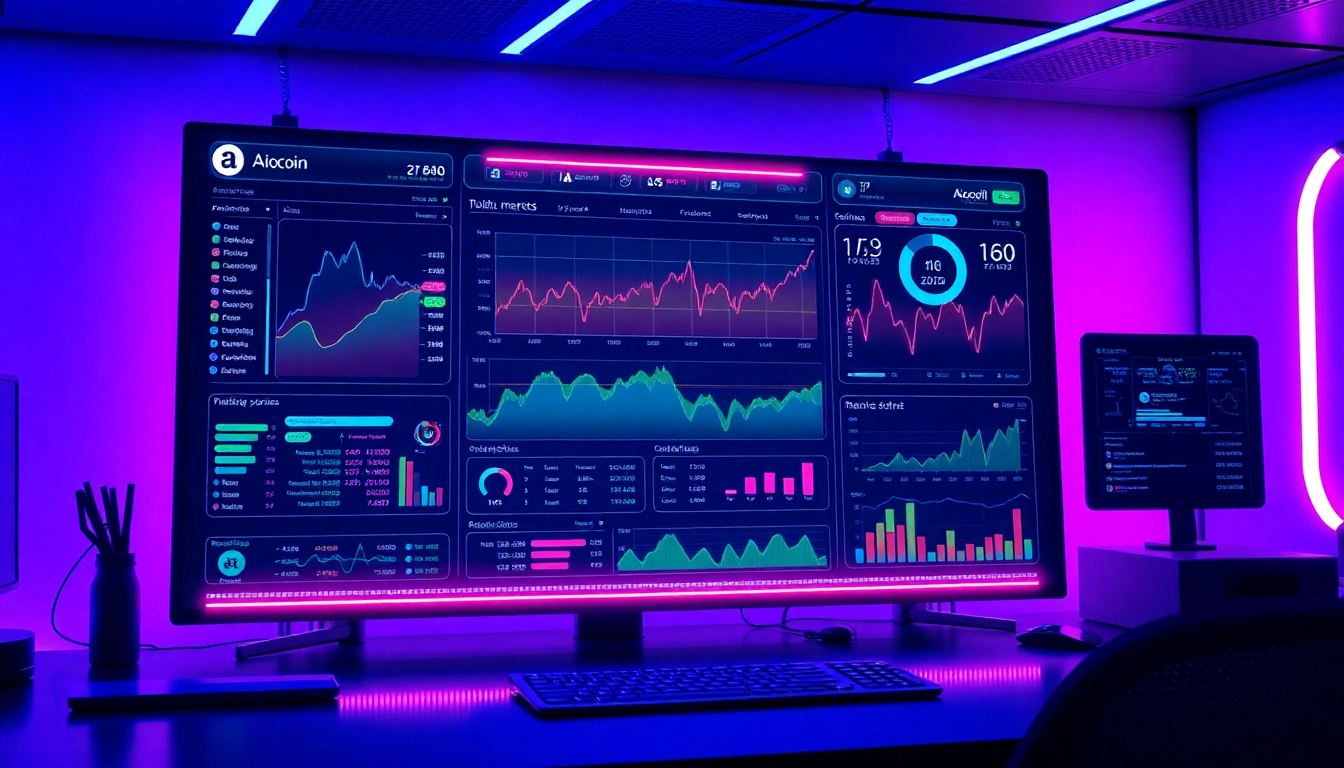Understanding Forklift Rental: Benefits and Options
In today’s dynamic industrial landscape, efficient material handling is pivotal for the success of businesses across sectors such as warehousing, manufacturing, logistics, construction, and retail. One of the most adaptable solutions for meeting these operational needs is forklift rental. As companies seek flexible, cost-effective, and reliable equipment options, forklift rentals have become an essential part of modern logistics strategies. This comprehensive guide delves into the intricacies of forklift rental, exploring the various types available, their advantages over ownership, key considerations when choosing a provider, and how to optimize their use for maximum operational efficiency.
Types of Forklift Rentals: Short-term vs. Long-term
Choosing the right type of forklift rental depends heavily on your specific business requirements, project timelines, and budget considerations. Broadly, forklift rentals are categorized into short-term and long-term options, each with distinct features and benefits.
Short-term Forklift Rentals
Short-term rentals typically range from a single day up to several weeks or a few months. This rental type is ideal for temporary projects, seasonal demand spikes, or unexpected equipment breakdowns. For instance, a warehouse preparing for a holiday sale may need extra forklifts for a brief period. Companies like Speedy Hire offer rapid delivery services for such immediate needs, ensuring minimal operational disruption.
Long-term Forklift Rentals
Long-term rentals span from several months to multiple years, often up to five years or more, providing a cost-effective alternative to outright ownership. This setup suits businesses requiring consistent equipment without the substantial capital investment or maintenance burdens associated with ownership. Companies like The Forklift Company provide flexible options for long-term hire, often including maintenance and support within the rental agreement, ensuring constant operational efficiency.
Deciding Between the Two
Factors influencing this decision include project duration, budget constraints, equipment lifespan, and maintenance capacity. Short-term rentals offer flexibility with minimal commitment, while long-term rentals provide stability and potential cost savings over time. Additionally, seasonal businesses may find a hybrid approach most effective, adjusting rental lengths according to changing demand.
Advantages of Renting Versus Buying Heavy Machinery
Opting for forklift rental over direct purchase presents multiple strategic benefits, especially for small to medium-sized enterprises or companies with fluctuating operational needs. This section explores key advantages, supporting data, and practical considerations.
Cost Efficiency and Cash Flow Management
Purchasing forklifts entails significant upfront capital expenditure, comprehensive maintenance costs, and depreciation. Conversely, renting disperses costs over manageable rental payments, preserving cash flow and freeing capital for other operational investments. For example, rental costs can start from just £65+ VAT per week, offering affordable access to top-tier equipment without large initial outlays.
Access to Latest Equipment
Rental agreements typically include the latest models with advanced safety features, efficient engines, and compliance with current regulations. This access reduces downtime caused by equipment failure and enhances safety and productivity.
Flexibility and Scaling
Business needs evolve, and rental flexibility allows companies to scale their fleet temporarily or permanently. Additionally, rental companies often provide equipment upgrades or replacements that align with operational needs, unlike ownership, which involves decommissioning and reselling outdated machinery.
Reduced Maintenance Burden
Most rental arrangements include maintenance and repair services. This partnership diminishes the operational burden on internal teams, ensures machinery operates optimally, and minimizes downtime.
Risk Mitigation
Market fluctuations, technological advances, and regulatory changes can impact equipment value and usability. Renting shifts the risk away from the business, as rental companies typically handle compliance, updates, and disposal.
Case Study: Cost Savings in Action
Consider a logistics firm that temporarily expanding its warehouse for peak season. By opting for a six-month rental instead of purchasing forklifts, the company saves approximately 40% on equipment costs, while maintaining operational flexibility and avoiding depreciation losses. Such strategic decisions underscore the financial prudence of equipment rentals in fluctuating markets.
Key Features to Consider When Choosing Forklift Rental Services
Selecting a reliable forklift rental provider requires thorough assessment across multiple dimensions. The following points highlight critical features that ensure value, safety, and operational continuity.
Equipment Quality and Maintenance Standards
Top-tier rental companies maintain their fleets to rigorous safety and performance standards, adhering to manufacturer specifications and industry regulations. Verify that the provider conducts regular inspections, keeps detailed maintenance logs, and promptly addresses repairs. Well-maintained forklifts reduce breakdowns, enhance safety, and prolong equipment lifespan.
Pricing, Contract Terms, and Flexibility
Transparent pricing structures, including clear details on rental rates, deposit requirements, and any hidden fees, are essential. Seek providers offering flexible terms—such as short notice upgrades, immediate deinstallations, or seasonal adjustments. Comparing quotes from multiple suppliers ensures competitive rates and favorable conditions.
Customer Support and Additional Services
Exceptional customer support, including responsive servicing, on-site assistance, and training, significantly impacts operational efficiency. Many providers also include optional extras such as operator training, transportation, and safety audits, helping your team utilize the equipment effectively and safely.
Availability and Delivery Speed
Quick turnaround times are vital, especially for urgent projects. Confirm that providers can deliver and install equipment promptly, ideally within 24 hours, to avoid delays.
Compliance and Certification
Ensure the rental company complies with UK health and safety standards, ISO certifications, and environmental regulations. Proper documentation and certification provide assurances of safety and legality.
The Process of Renting a Forklift: Step-by-Step Guide
Getting started with forklift rental involves a clear, structured process to ensure you meet your operational goals efficiently. Here’s a detailed step-by-step approach:
Determining Your Business Needs and Requirements
Analyze your operational scope—consider load capacity, lift height, terrain, indoor or outdoor use, and power source preferences (electric, diesel, LPG). Evaluate the duration of need and specific features like safety accessories or attachments. Consulting with equipment specialists can refine your specifications.
Requesting Quotes and Comparing Options
Contact multiple providers, sharing your detailed requirements. Obtain comprehensive quotes that include equipment details, delivery timelines, support services, insurance, and maintenance terms. Use online calculators, such as those on Rentmas.com, to gauge estimated costs and negotiate better rates.
Scheduling Delivery and Installation
Once you’ve selected a provider, coordinate delivery dates, setup, and operator training if necessary. Clarify responsibilities regarding site access, safety protocols, and maintenance schedules. Confirm that the equipment complies with all safety standards and that documentation is in place.
Onboarding and Training
Proper training for operators is crucial to maximize safety and productivity. Many rental companies offer on-site or in-house training programs, which can include handling techniques, safety protocols, and emergency procedures.
Monitoring and Maintenance
Establish routines for inspecting equipment, recording performance metrics, and scheduling preventive maintenance. Regular checks ensure equipment longevity and operator safety, minimizing unexpected downtime.
Optimizing Forklift Rental for Your Business Operations
Maximizing the benefits of forklift rental involves strategic planning, proper staff training, and ongoing performance management. The following best practices can significantly enhance operational efficiency.
Implementing Proper Training and Safety Protocols
Invest in comprehensive operator training programs to reduce accidents, enhance handling skills, and ensure compliance. Use a combination of theoretical instruction and practical assessments. Incorporate safety equipment such as hi-vis vests, helmets, and safety barriers, fostering a safety-first culture.
Maximizing Equipment Usage and Efficiency
Plan material flow meticulously to minimize idle times and optimize load handling. Utilize features such as telemetry systems and digital maintenance logs to monitor usage patterns, and adjust operational procedures accordingly.
Monitoring Performance and Maintenance Schedules
Leverage data analytics from telematics, fuel consumption, and usage logs to identify inefficiencies. Implement predictive maintenance strategies based on real-time data, reducing downtime and repair costs.
Ensuring Compliance with Regulations
Stay updated on UK health and safety standards, including LOLER (Lifting Operations and Lifting Equipment Regulations) compliance. Regular audits and staff training reinforce adherence, avoiding fines and operational halts.
Cost Considerations and Performance Metrics for Forklift Rentals
Understanding financial aspects and quantifying operational efficiency are key to maximizing ROI from forklift rental agreements.
Understanding Rental Pricing Structures and Hidden Costs
Common structures include flat weekly or monthly rates, with additional charges for extras such as insurance, operator services, fuel, or damage repairs. Always clarify if delivery, setup, and pickups are included. Hidden costs can include overtime charges or late return penalties—review rental agreements carefully.
Measuring ROI and Operational Efficiency
Track metrics such as load throughput time, equipment downtime, fuel consumption, and maintenance costs. Use this data to compare against initial investment and ongoing operational costs, providing a clear picture of rental efficacy.
Case Studies: Successful Rental Implementations
Example 1: A retail chain expanded its inventory handling during peak season using short-term forklift rentals, saving 30% compared to purchasing new equipment and avoiding storage costs of unused machinery.
Example 2: A manufacturing unit streamlined its logistics by renting high-capacity forklifts with advanced attachments, resulting in a 20% increase in pallet throughput and reduced labor fatigue.







